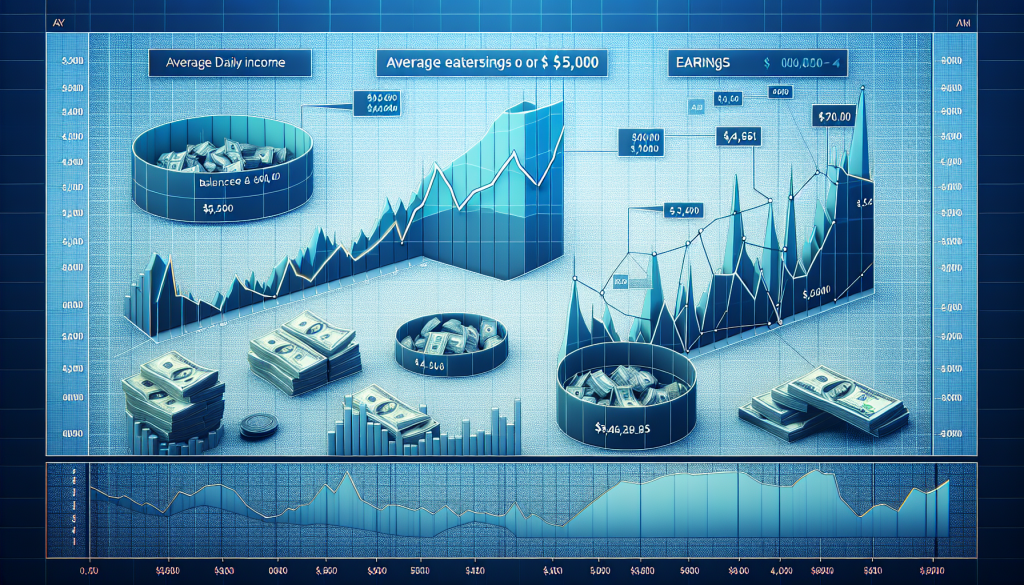How Much Money Do Day Traders With $5,000 Accounts Make Per Day on Average?

When it comes to day trading, one common question is, “how much money do day traders with $5,000 accounts make per day on average?” In this article, we’ll venture into the fascinating world of day trading, exploring potential earnings through a blend of data, experiences, and expert insights.
Deconstructing Day Trading
Day trading involves buying and selling financial assets such as stocks, forex, or futures within the same trading day. The goal is to capitalise on minor price movements, thus requiring a solid understanding of the market.
Average Profits for $5,000 Accounts: What to Expect?
Now to our main query: how much can day traders with $5,000 accounts make on average per day? Given the diverse trading strategies, the exact profit margins can differ significantly between traders.
Nonetheless, it’s generally accepted that a successful day trader can make between 1% to 2% of their account balance per day. Therefore, for a $5,000 trading account, this amounts to approximately $50 to $100 daily. However, these figures are mere estimates, not guarantees.
Key Factors Affecting Daily Earnings
Several elements come into play when determining a day trader’s potential earnings. Here are some critical ones:
- Trading Strategy: A well-crafted strategy is key to maintaining consistent profits and mitigating significant losses.
- Market Volatility: Day traders thrive in volatile markets. Greater volatility often means more opportunities for profit but also increases risk.
- Experience and Skill Level: Traders who have honed their skills and have extensive market knowledge typically increase their profits over time.
Risks: The Other Side of Day Trading
While day trading can seem attractive due to potential high returns, it’s important to bear in mind that it carries substantial risks. The opportunity for losses is just as high — if not higher — than the potential for gains. Therefore, understanding this balance is crucial when stepping into the world of day trading.
Optimising Profits from a $5,000 Account
To maximise potential earnings from a $5,000 trading account, here are some tips:
- Education: Keep learning about market trends and strategies. Knowledge is power in trading.
- Practice: Utilise demo accounts to refine your strategy without the risk of losing real money.
- Patience: Profits from day trading aren’t instant. It requires patience and consistency to see substantial results.
In conclusion, the question of “how much money do day traders with $5,000 accounts make per day on average” doesn’t have a definitive answer, as it depends on numerous factors. However, with the right knowledge, skills, and patience, day trading can be a profitable endeavour. As with all trading activities, it’s essential to understand its complexity and inherent risks before diving in.

